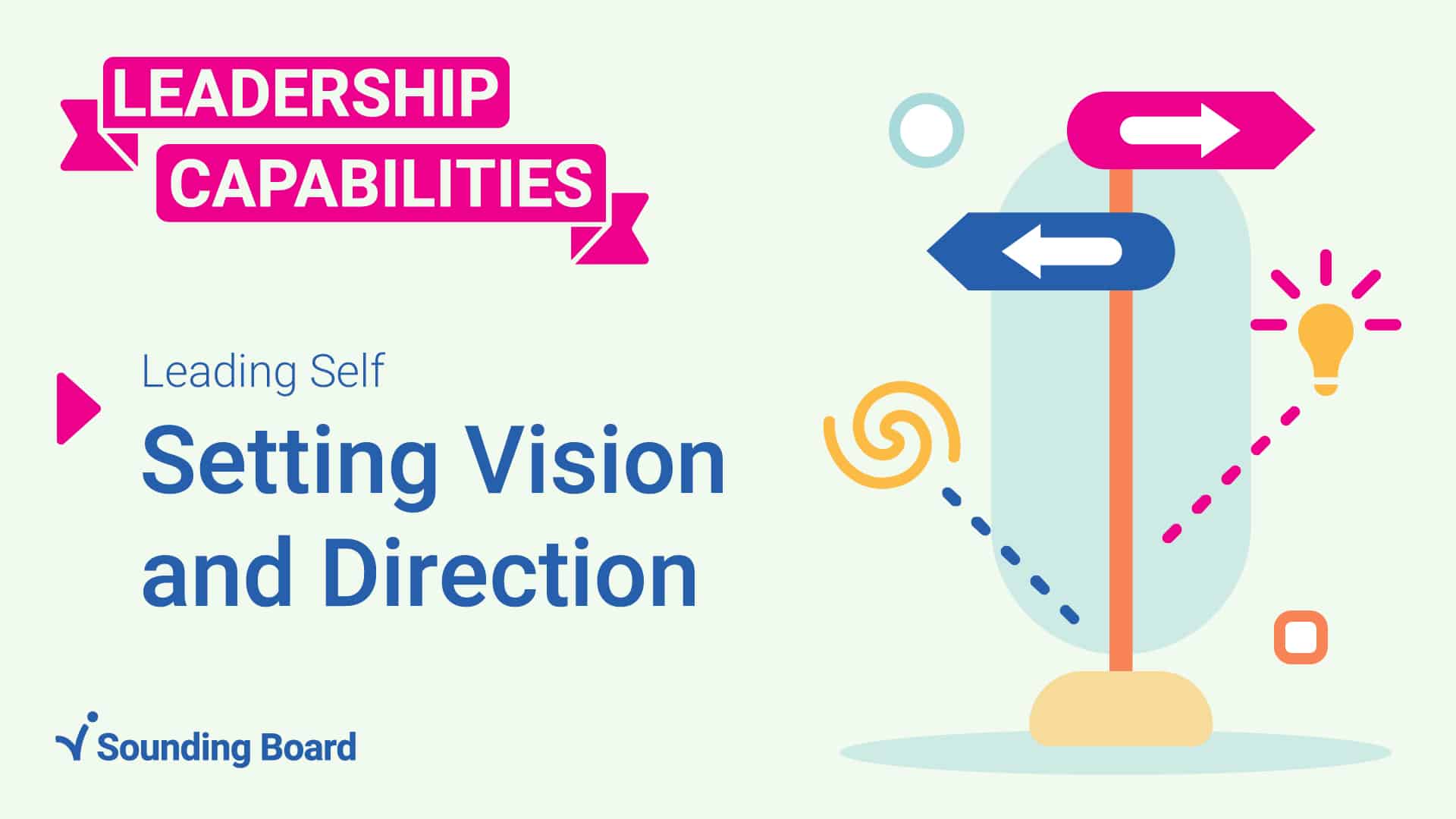This blog is part of a 16-part series focused on what capabilities make a strong leader. Sounding Board has identified 16 leadership capabilities that the strongest leaders possess. These were developed from research-backed leadership theories, leadership competencies used for evaluation from top business schools, and 25+ years of practical coaching application.
Amid constant business disruptions, change, and uncertainty, leaders need to develop leadership vision skills to inspire and drive their organizations forward. Those with visionary leadership skills can see where an organization should be in the future, and they can decide which ideas and actions are needed to get there. Further, these leaders will ensure that everyone works together, moving collaboratively toward a common goal.
Why visionary leadership is important
A vision is like a destination the organization is headed toward. It’s a clear view of the most desirable future, one that should be connected to the organization’s strategic goals. Yet, while vision is where we see ourselves in the future, direction is also important. We need to know which steps or path to take to get there. Vision and direction act in concert as guiding forces for the entire organization.
When leaders have strong vision and direction skills, they create environments and teams where people know where they are headed, what is required, and are encouraged to move forward despite any challenges that may arise.
The characteristics of a skilled visionary leader
A leader who is excellent at setting vision and direction will:
Communicate high level goals
Leaders must share the goals set from higher ups in the organization. It is also their responsibility to translate and break down these larger organizational goals for their individual team members operating in specific roles.
Create a line-of-sight
Sharing the overarching goals is the first step. Visionary leaders connect with their team later to make sure everyone understands how their work aligns with these organizational objectives, and that they have the resources and support needed to meet them.
Set a clear, common, motivating purpose
Visionary leaders clearly convey their strategic plans, which embody the organizations’ beliefs and values. This helps to create a standard level of performance for everyone to follow, a foundation upon which the team can build together.
Setting vision and direction
How can leaders establish a vision and direction for their teams? This task calls for high levels of creativity, brainstorming, and decision-making. Rather than short-term planning, vision setting requires long-range plans that set the stage for success.
Along with their team, leaders should brainstorm new, future-oriented ideas and possibilities that align well with established business objectives. Here are some factors to keep in mind when setting vision and direction for the company or your team:
Involve the entire organization
Organizational vision needs to drive commitment and loyalty from every team member. One way to achieve this level of buy-in is to involve teams in creating the vision. This also reduces employee resistance. When people are involved in its development, they’re more likely to accept, support, and work toward realizing the vision.
Be future-oriented but realistic
While the vision needs to drive bigger and better achievements, it must be realistic. The vision should be attainable given the budget or resources available to truly inspire commitment and excitement among leaders at all levels.
Drive motivation
The vision and direction need to motivate employees. Ideally, it should make team members believe they’re a part of something bigger and better for both the organization and for themselves.
Communicate regularly
The team’s vision should go beyond just crafting a mission statement – it should be communicated, shared, and reflected in the organization’s day-to-day tasks. This helps to keep it top of mind for everyone, which in turn helps to accelerate implementation and realization.
Challenge team members
A successful vision challenges people to grow. A forward-looking vision should encourage team members to stretch themselves, to go the extra mile to accomplish tasks, and achieve the company’s goals. Leaders are certainly not exempt here. They may need development in order to create and see through a suitable vision, and leadership coaching can help.
Turning vision into reality
Just setting the vision and direction isn’t enough. Leaders need to take action to put these skills into practice. They need to have a clear and vivid picture of what they want to achieve to help employees prepare, and then establish a strategy the organization will want to follow. If they don’t have clarity here, leadership coaching can help.
An experienced leadership coach can help a leader to document the specific goals the company wants to achieve, how they will achieve them, what actions to take, and what capabilities they need to develop to guide all plans to completion. Development, whether for a company or a leader, is eternally dynamic.
Even as they work to develop the aforementioned visionary leadership skills, leaders must remind the team of the vision at intervals, encourage them to stay focused, regularly update the team on their progress, and celebrate every win along the way.
Start Now
Setting vision and direction is a critical capability in a successful leader. Not sure where to start? The team at Sounding Board has you covered. Our network of certified coaches are highly trained in leadership development and can offer personalized solutions to help your business thrive. For more information, reach out to our team.









